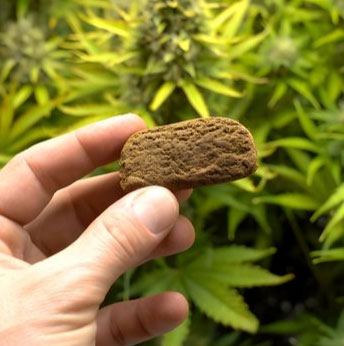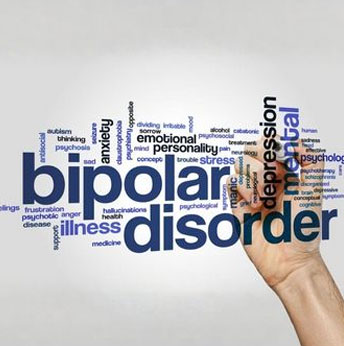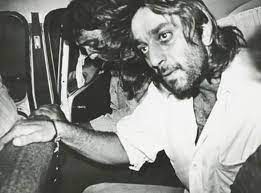
Fame, money, and fans are things that often seem like the best things in the world. But beyond the glitz and glamor of celebrity, many renowned people have challenges that aren’t always easy to see that test their strength and integrity. One such is that of rapper Yo Yo Honey Singh’s addiction recovery journey, who was battling bipolar disorder, addiction, and struggling to get his life and passion back.
He even went a step further by opening up about mental health during a live session on his YouTube channel. Instead of avoiding the topic, as many famous people still do, he chose to speak honestly about stress, burnout, and emotional well-being. His goal wasn’t just to share his own experience, but to raise awareness among his audience, which largely consists of young viewers and Gen Zs. He helped make mental health topics more acceptable by talking about these problems frankly and encouraging his supporters to take care of themselves.
Finally, he came back to music. But what made his recovery trip so exceptional was that he was bold enough to talk about mental health awareness, as mentioned, which is something that a lot of individuals in the entertainment world would have avoided.
Fame and Fragility: The Rise and the Fall
 In the early 2010s, there was no stopping Honey Singh. With songs like “Brown Rang,” “Angrezi Beat,” and “Lungi Dance,” he became India’s biggest pop singer. But underneath all the prosperity, there was a man who was having a hard time making ends meet. Singh later said that being famous was very stressful for him, and the stress, together with bipolar disorder symptoms, led to drug addiction and isolation.
In the early 2010s, there was no stopping Honey Singh. With songs like “Brown Rang,” “Angrezi Beat,” and “Lungi Dance,” he became India’s biggest pop singer. But underneath all the prosperity, there was a man who was having a hard time making ends meet. Singh later said that being famous was very stressful for him, and the stress, together with bipolar disorder symptoms, led to drug addiction and isolation.
In another interview with Zee Media, Singh also said he used to smoke hash (charas) for two and a half years, “I used to smoke 12 joints every day”. At first, it was a technique to deal with life challenges, but it turned into a bad habit that was hurting his mental health altogether.
The Dark Phase: A Person Who Was Missing for Almost 2 years
When Honey Singh left the music world from 2014 to 2016, fans were confused, and tabloids made guesses. At this point, everything in his life fell apart. He had to cease being in the public eye completely because his mental health grew so poor so quickly while he was on a world tour for his worldwide fans.
In 2016, Singh came clean in his interviews and talked about his struggles with bipolar disorder symptoms, which resulted in extreme mood swings, irritability, and depression. Then the situation worsened as psychotic symptoms also began for him. Moreover, he went on to say that he was terrified of everything and everyone, and he isolated himself in a room for several months.
A lot of people thought he had to go to a treatment clinic, but Singh made it plain that he was getting better at his home in Noida. His family’s continual support and many rounds of medical therapy were what helped his addiction recovery journey.
The Long Road to Recovery: Getting Better at Home
 Getting better wasn’t easy. Singh added that throughout this time, seven doctors from different parts of the world took care of him. Some people even called him a “lost case.” But he didn’t want to stop. Instead of striving for fame, he chose to get better first. Meanwhile, all this was happening, his family was very supportive of his addiction recovery journey; they were always there for him when he needed them.
Getting better wasn’t easy. Singh added that throughout this time, seven doctors from different parts of the world took care of him. Some people even called him a “lost case.” But he didn’t want to stop. Instead of striving for fame, he chose to get better first. Meanwhile, all this was happening, his family was very supportive of his addiction recovery journey; they were always there for him when he needed them.
Being alone made him ponder who he really was. Music, which used to be his job, has proven to help him feel better later as well. He wrote more than 50 poems about pain, hope, and change, and he wants to publish many of them. This artistic practice was a very essential element of his addiction recovery journey. Fundamentally, it solidified that art can often heal when medicine can’t.
Coming Out of the Shadows to Reestablish Contact with Fans
Singh abruptly returned to his followers in 2018 after a long absence and addressed them. It was about being authentic as much as it was about producing music again. His struggles with addiction, psychosis symptoms, and recovery were all topics he discussed freely.
When Honey Singh told the truth about his life, he became an unexpected supporter of mental health awareness. He openly discussed his struggles, illustrating that even well-known individuals can experience emotional or mental wellness issues. He showed that even at the top, you can fall, but you can also go back up, stronger and more conscious of yourself.
“Yo Yo Honey Singh: Famous,” a Netflix Original Show
 In late 2024, Yo Yo Honey Singh: Famous was uploaded on Netflix. And his life was shown in all its honesty in the documentary. Not only does it delve into his meteoric rise and even subsequent fall from grace, but it also goes into the challenges he faced in his recovery. For many, it was their first glance at the fragile realm of celebrity mental health, where being famous can make you feel better and worse at the exact same moment.
In late 2024, Yo Yo Honey Singh: Famous was uploaded on Netflix. And his life was shown in all its honesty in the documentary. Not only does it delve into his meteoric rise and even subsequent fall from grace, but it also goes into the challenges he faced in his recovery. For many, it was their first glance at the fragile realm of celebrity mental health, where being famous can make you feel better and worse at the exact same moment.
Moreover, various people had various opinions about the documentary, but it conveyed one vital message: it started people talking about mental health. It illustrated how bipolar disorder symptoms and drug use can be linked. Many of Singh’s fans, who were going through a hard time but didn’t say anything, saw themselves in his story.
What We Can Learn From Honey Singh’s Journey
Individuals who are in their addiction recovery journey and also individuals who are watching from the outside can both learn something. Honey Singh’s transformation carries powerful takeaways for anyone facing similar struggles.
- Get help from an expert immediately.
The first step to getting well is to admit it. Singh needed to see more than one doctor to become better. Going out for professional aid can help find hidden issues that are often neglected, such as bipolar disorder or psychotic symptoms. For specialized expert treatment, someone may look here! - Build a strong network of support
And as he mentioned, his family was a lifeline for him. For healing, it’s necessary to have understanding and compassion that comes from loved ones you’re comfortable with. These people believe in your strength and can obviously make a great difference.
 Put mental health awareness at the top of your list
Put mental health awareness at the top of your list
Honey Singh’s case shows how crucial it is to cope with emotional pain before it gets too bad. You should put treatment, awareness, and rest ahead of continually being under work pressure to stay balanced.- Pain to a goal
Singh didn’t try to hide his sentiments; instead, he used music and poetry as ways to express himself. People who are recovering from addiction can let go and get clear by writing, painting, or even maintaining a journal.
- Be honest about your issues
His forthrightness paved the way for others to talk about the celebrity’s mental health and drug issues. It’s the fact that, in order to alleviate feelings of shame and isolation, talking about one’s troubles can boost confidence in others to get treatment. - There is no prescribed order for recovery
There were ups and downs throughout Singh’s journey, but he chose to keep going. This proves that being strong and improving on a regular basis at a time is more important than trying to be flawless at once.Here are more recovery stories to read on and make oneself more educated to help at a crucial time.
Conclusion: The Beat Goes On
Yo Yo Honey Singh is more than an artist now; he is a symbol of fortitude and a survivor. His story shows that a person’s mental condition or addiction doesn’t define them; their recovery does. He is still changing on his way to an addiction recovery journey, and he is learning to love himself and be more creative.
A New Era For Honey Singh

Singh’s outlook on life changed when he got healthier. He also said that bipolar disorder was “the Covid of mental health,” which drew people’s attention and emphasized how serious it is and how crucial it is to be understanding.
We have to agree that his coming out has helped break the taboo about mental health awareness in India, especially in the entertainment industry, to help regain insight into how industry portrayal of addiction shapes awareness among the masses.
No matter how dark the night, Honey Singh’s story proves that life, hope, and healing never completely stop.









